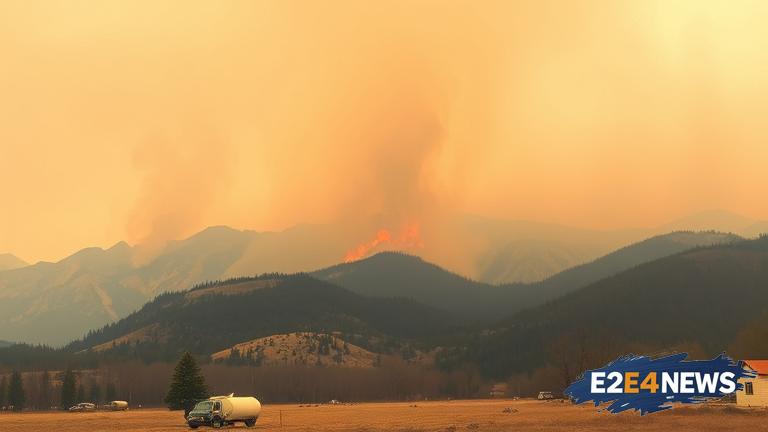A series of wildfires has erupted on Colorado’s Western Slope, prompting evacuations, road closures, and air quality alerts. The fires, which are burning in various locations across the region, have sent massive plumes of smoke into the air, reducing visibility and causing respiratory issues for some. According to officials, the blazes are being fueled by hot and dry conditions, as well as strong winds. Firefighters are working tirelessly to contain the fires, but their efforts are being hindered by the challenging terrain and unpredictable weather. The largest of the fires, which is burning in Mesa County, has already scorched thousands of acres of land and forced the evacuation of several homes. Other fires are burning in nearby counties, including Garfield and Rio Blanco. The smoke from the fires is not only affecting local residents but also impacting air quality in surrounding areas, including the popular tourist destination of Aspen. Visitors to the area are being advised to take precautions to protect themselves from the smoke, including staying indoors and avoiding strenuous outdoor activities. The Colorado Department of Public Health and Environment has issued an air quality alert for the region, warning of hazardous conditions. Meanwhile, firefighters are working to create containment lines and conduct aerial attacks on the fires. The cause of the blazes is still under investigation, but officials suspect that lightning may have played a role. The Western Slope is prone to wildfires due to its dry climate and abundant vegetation. In recent years, the region has experienced several large and destructive fires, including the 2020 Pine Gulch Fire, which burned over 139,000 acres of land. The current fires are a reminder of the importance of fire safety and prevention, particularly in areas prone to wildfires. Residents and visitors are being urged to take steps to prevent human-caused fires, including fully extinguishing campfires and disposing of cigarettes properly. The Colorado Division of Fire Prevention and Control is working to educate the public about fire safety and provide resources for those affected by the fires. As the situation continues to unfold, officials are urging everyone to stay informed and follow evacuation orders and other instructions from authorities. The American Red Cross has set up shelters for those displaced by the fires, and donations are being accepted to support relief efforts. The Colorado National Guard has also been deployed to assist with firefighting efforts. In addition to the immediate concerns, the long-term impacts of the fires are also being considered, including the potential effects on local wildlife and ecosystems. The US Forest Service is working to assess the damage and develop a plan for rehabilitation and restoration. As the fires continue to burn, the people of Colorado are coming together to support each other and respond to the crisis. The state’s emergency management officials are coordinating relief efforts and providing updates on the situation. The Federal Emergency Management Agency (FEMA) is also involved, providing resources and support to affected areas. The Colorado wildfires are a reminder of the importance of preparedness and community resilience in the face of natural disasters.
